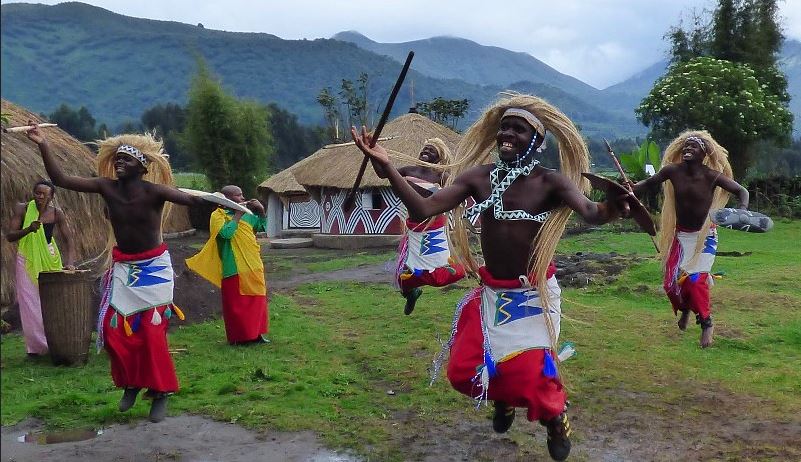Cultural Tours in Rwanda
Cultural tours are travel experiences that emphasize experiencing and learning about a specific culture or region’s arts, beliefs, customs, and way of life. They include information on a society’s history, architecture, food, music, and other intellectual, spiritual, and emotional facets. You can learn about the various arts, organizations, and beliefs that people in other nations have kept. And treasured by taking a cultural tour. Beliefs, religion, and tradition are transmitted from one generation to the next. Cultural Tours in Rwanda, These journeys are frequently taken by those who are keen to learn about, explore, and study nature, folklore, and sites and monuments. Experiencing and comprehending the cultural legacy of locations and its inhabitants is just as important as simply capturing photographs.
Discover the Dynamic Rwandan Traditions and Culture
The Rwandan cultural excursions are a great option if you want a distinctive vacation experience. This stunning nation in East Africa has a rich cultural heritage and an intriguing past. There is a lot to see and do in Rwanda, from touring the traditional villages and discovering the customs and beliefs of the residents to touring the museums and famous sites.
Visit the King’s Palace in Nyanza
A magnificently designed thatched home shaped like a beehive. According to oral tradition, Nyanza was once the center of Rwanda and was the site of numerous power struggles and conflicts before the monarchy decided to move the court there. Up to 2,000 people lived in the kingdom’s capital in huts built with similar methods. In order to preserve the unique custom, a few long-horned Lnyambo cattle from the king’s herd are cared for and entertained by professional cattle keepers who sing to them.
In the king’s honor ceremonies, the beautiful cows—part of the larger Ankole breed—were of great importance. When Rwanda became independent of colonial administration in 1962, it ceased to be a monarchy. Nonetheless, the Rwanda Agriculture Board continues to oversee the breeding and grooming of Lnyambo.
Museum of Ethnography
A late 1980s gift from King Badouin of Belgium. One of Africa’s best ethnographic collections is kept in the Ethnographic Museum. With the help of visual aids, seven galleries showcase historical, anthropological, artistic, and archaeological artifacts, providing visitors with a comprehensive understanding of Rwandan culture. Items used in hunting, agriculture, animal husbandry, ceramics, weaving, and woodworking are displayed after the geographical and geological exhibitions.
Ibyiwacu Cultural Village visit
The Ibyiwacu Cultural Center is made to provide a variety of engaging educational opportunities, while also letting guests unwind and experience the local way of life. Loud drumming and dancing are typically performed at the main gate to greet visitors, which is just a sign of the numerous exciting events that will take place soon. Let’s take a closer look at a few of the activities below.
The greatest method to comprehend the diversity of the human race is to engage, share, and generally become immersed in the customs of various communities through home visits and community walks. When visiting the Gorilla Guardians Village, tourists get the opportunity to learn about the distinctiveness of Kinyarwanda culture. And tradition through home visits and town excursions. When you visit the Ibyiwacu cultural village. You get the opportunity to sit next to the residents in their grass-thatched huts and traditional residences. The elders will tell you stories and provide you with information about Rwanda’s rich history and traditions as you sit down. You will get the chance to see the nearby vegetable and banana plantations. You might even learn how to create fine millet flour with a special grinding stone. And how to prepare one of the traditional dishes.
Discover Conventional Construction
This flexible-length trip with a local family allows you to experience remote village living. And learn about traditional Rwandan building methods. Learn the ancient techniques used by Rwandans to manufacture rope from banana trees and make bricks. Following a straightforward yet delectable lunch of cassava and beans. You will spend the afternoon using your newly acquired skills to construct a house, fence, or animal shelter. Enjoy the opportunity to purchase handicrafts manufactured locally as you wrap up your tour. This opportunity to learn about Rwandan construction also includes transportation to the village, lunch, and a tour.
Genocide Memorial in Kigali
Perhaps the most popular museum in Rwanda is this one. It was constructed as a memorial to the roughly 250,000 individuals who perished in the genocide in Rwanda. Three main sections make up the museum: one honoring the children who were slaughtered, one for adults. And one that focuses on genocides that has place in other regions of the world. You can learn more about what happened before and after the genocide by visiting this museum. In order to prevent the genocide from ever happening again, the government hopes that the museum will serve as a continual reminder of the brutality displayed throughout the conflict.
The Inema Art Center
In Kigali, two brothers founded this center. It is among Kigali’s most popular artisan centers. Young pretenders who are still learning the craft and some of the best local artists are brought together at the Inema Center. If you are interested in unique Rwandan art that depicts the nation’s culture, animals, natural resources, and physical characteristics, stop by this center. If you go on a good day, you might expect to see a fashion show or be entertained by local Indigenous artists.
Cultural Tours in Rwanda are a worthwhile and enriching travel experience since they provide a special chance to explore Rwanda’s rich heritage, interact with local communities, and support sustainable tourism.




